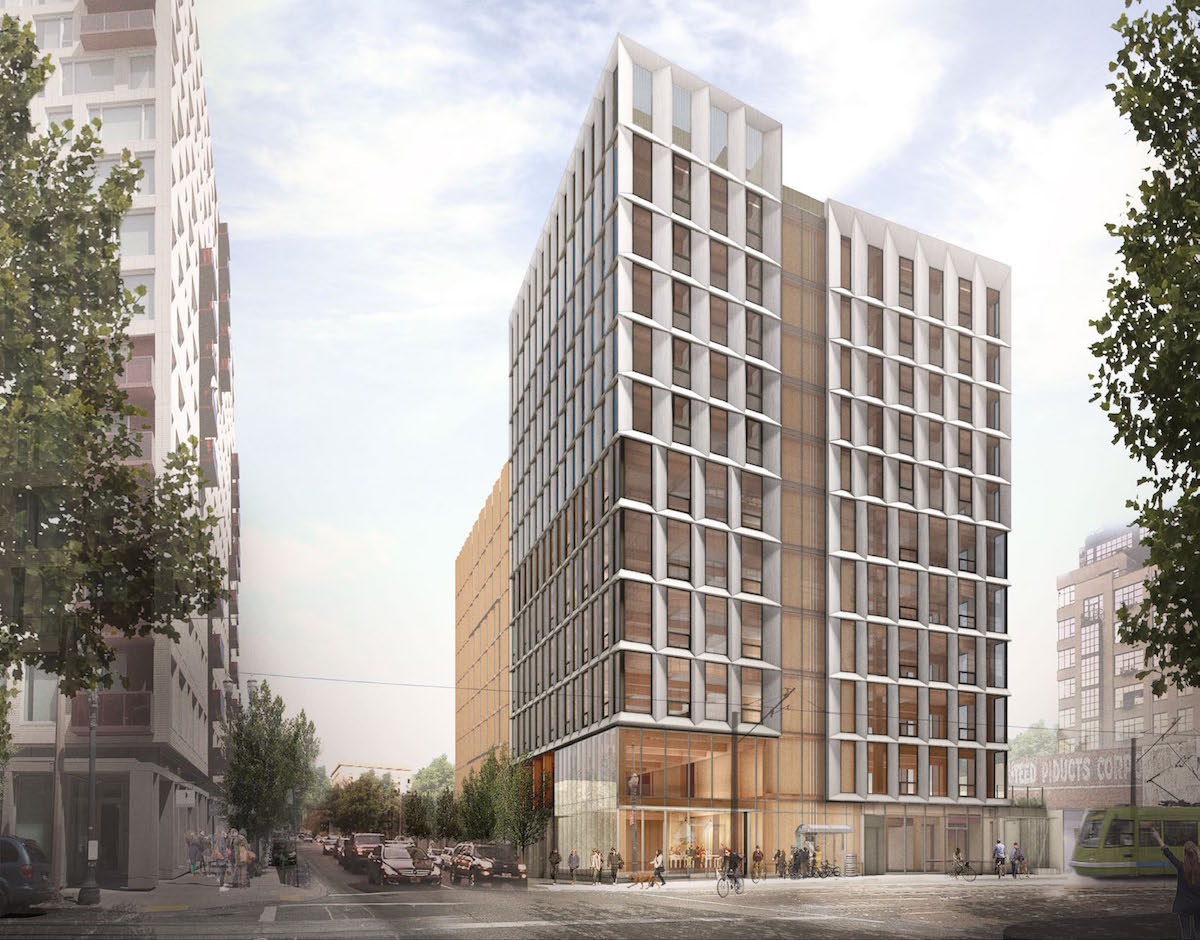Now, numerous commercial CLT buildings have been erected nationwide, and developers' sights have turned towards high rises. A new business center in Minnesota currently stands as the nation's largest mass timber building, and a new 12 story high rise has secured permits and is on the way in Portland, Oregon. Potentially taking the trend of building CLT high rises even further, an 80 story tower in Chicago is currently being seriously considered as well.
 |
| Portland's soon-to-be CLT high rise |
An even more important benefit of mass timber construction lies in its carbon footprint. Releasing substantially fewer greenhouse gasses in the building process than concrete production, mass timber construction is a greener alternative to standard high rise construction. In the current construction climate (particularly in places such as Portland), green building credentials are a fantastic selling point.
For now, the singular criticism against mass timber construction is in regards to fire safety. Detractors are concerned that high rise buildings framed with wood are more susceptible to fire damage than their concrete/steel counterparts. However, given that ass mass timber buildings must pass and adhere to the same fire codes as traditional buildings, there isn't an elevated fire danger.
The literal rise in mass timber buildings will be an interesting trend to follow in the coming years. As new projects are completed and these buildings become increasingly commonplace, expect a continued surge in their construction.
No comments:
Post a Comment
Note: Only a member of this blog may post a comment.